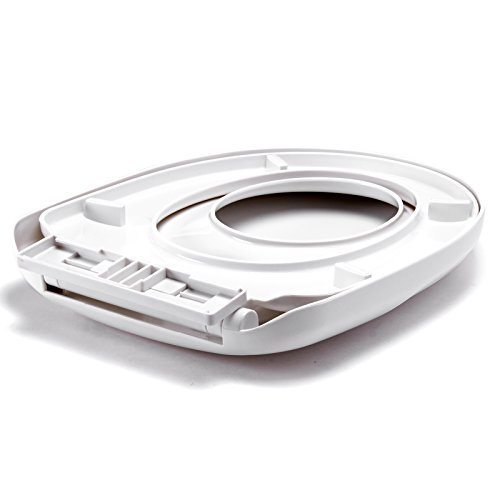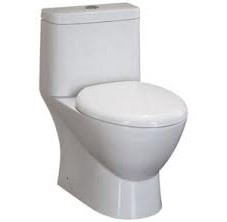Introduction
Toilets are An important Section of our every day life. They offer us by using a handy and hygienic method to eliminate waste. Nevertheless, like almost every other plumbing fixture, toilets can face problems such as leaks, clogs, and working drinking water. These difficulties can not simply be discouraging but also bring about water wastage and improved utility bills. In this post, We are going to take a look at frequent rest room difficulties and provide you with realistic solutions on how to discover and deal with them.
Table of Contents
Common Rest room Problems
- Leaks
- Identifying leaks Fixing leaks
- Identifying clogs Fixing clogs
- Identifying working water Fixing managing water
Understanding Bathroom Parts
- Tank components Bowl components
Types of Toilets
- Dual flush toilets Single flush toilets
Where to purchase Substitution Sections for Toilets?
EAGO Toilets: A Dependable Choice for Rest room Troubles
Common Bathroom Problems
Leaks
Identifying leaks
One of the commonest rest room difficulties is a leak. Leaks can occur in different aspects of the rest room, such as the tank, bowl, as well as the supply line. Identifying a leak is important to be able to avert even further hurt and wastage of drinking water.
To identify a leak inside your bathroom, follow these steps:
Remove the tank lid.
Add several drops of foodstuff coloring in the tank.
Wait for 15-twenty minutes devoid of flushing.
Check the bowl for any shade alter.
If the h2o within the bowl alterations color, you've got a leak.
Fixing leaks
Once you've discovered a leak within your toilet, it is important to choose rapid action to repair it. Here are several popular answers for correcting leaks:
Replace the flapper: The flapper is actually a rubber valve that seals the tank and stops drinking water from flowing in the bowl. If the flapper is previous or worn out, it may not generate a proper seal, creating drinking water to leak. Swap the flapper that has a new just one to solve The problem.
Adjust the fill valve: The fill valve controls the drinking water stage during the tank. When the water amount is too high, it can overflow to the overflow tube and lead to leaks. Change the fill valve to make certain the h2o level is under the overflow tube.

Check and substitute faulty pieces: Inspect all other components of your rest room, such as the flush valve, provide line, and gaskets for virtually any indicators of damage or wear. Replace any faulty parts to do away with leaks.
Clogs
Identifying clogs
Clogs are A further prevalent dilemma that can come about in toilets. They can be a result of many factors, which include extreme rest room paper utilization, flushing non-flushable merchandise, or maybe a buildup of particles within the pipes.
To recognize a clog as part of your rest room, look out for these indications:
Slow drainage: If water drains slowly but surely or does not drain in the least immediately after flushing, It truly is probable that you've a clog.
Gurgling Seems: When you listen to gurgling Appears coming from a bathroom any time you flush or immediately after flushing, it indicates a clog from the pipes.
Overflowing: In the event your toilet overflows if you flush, It is a transparent sign of the critical clog.
Fixing clogs
Dealing which has a clogged toilet is often uncomfortable, but there are plenty of procedures you can try to solve The difficulty:
Plunger: The commonest and helpful Device for unclogging toilets is actually a plunger. Spot the plunger about the drain hole and vigorously plunge up and down to create suction and dislodge the clog.
Plumbing snake: When the plunger doesn't operate, it is possible to consider employing a plumbing snake. Insert the snake in the drain gap and rotate it clockwise to interrupt up or retrieve the clog.
Enzyme-dependent cleaners: Enzyme-primarily based cleaners might help stop working natural waste and obvious slight clogs. Follow the maker's Directions for good utilization.
Running Water
Identifying working water
Running h2o in a toilet is not merely frustrating and also results in excessive water usage. It might be caused by several factors, such as a defective flapper, an improperly altered fill valve, or simply a leaking offer line.
To determine operating h2o with your rest room, look out for these indicators:
Constant seem of water working: If you listen to h2o managing even though you haven't flushed just lately, it implies a operating drinking water problem.
Water meter take a look at: Change off all faucets and appliances that use water in your home. Test your drinking water meter, and if it continues to operate, you probable Possess a working toilet.
Fixing working water
Fixing managing drinking water with your bathroom demands pinpointing the fundamental cause and having acceptable motion:
Adjust or switch the flapper: A faulty flapper can allow for drinking water to consistently leak in the tank in to the bowl. Regulate or replace the flapper to make sure a suitable seal.
Adjust the fill valve: In the event the fill valve is improperly adjusted, it may induce drinking water to continuously circulation in to the tank. Alter it making sure that it stops filling as soon as the tank reaches its sought after amount.
Replace faulty parts: Inspect all parts of the toilet, such as the flush valve and supply line, for virtually any indications of harm or leaks. Switch any defective parts to halt the working drinking water.
Understanding Rest room Parts
To efficiently troubleshoot and fix toilet challenges, It truly is necessary to Possess a primary comprehension of the various factors which make up a bathroom. Listed here are The important thing elements of a bathroom:
Tank Components
- Flush valve: The flush valve is answerable for releasing drinking water within the tank to the bowl any time you flush. Fill valve: The fill valve controls the water degree inside the tank and refills it after Just about every flush. Flapper: The flapper is a rubber valve that seals the tank and helps prevent water from flowing in to the bowl when not flushing.
Bowl Components

- Trapway: The trapway is often a curved passage in the base from the bathroom that carries squander to your sewer line. Rim holes: Rim holes are compact openings across the top rated fringe of the bowl that release h2o through flushing. Siphon jet: The siphon jet is found at the bottom in the bowl and makes a powerful circulation of drinking water to get rid of squander.
Types of Toilets
When it relates to toilets, there are two major types: twin flush toilets and single flush toilets. Let us explore Every sort:
Dual Flush Toilets
Dual flush toilets give two selections for flushing – a full flush and also a fifty percent-flush. This style will allow buyers to make a choice from an increased volume flush for sound squander along with a reduced quantity flush for liquid squander. Dual flush toilets are known for their h2o-saving abilities, making them an environmentally friendly selection.
Single Flush Toilets
Single flush toilets have only one flushing possibility, which typically takes advantage of extra h2o than a 50 percent-flush with a twin flush bathroom. Whilst they is probably not as drinking water-effective as dual flush toilets, they are usually more reasonably priced and less complicated to keep up.
Where to order Replacement Sections for Toilets?
If you'll need alternative sections on your bathroom, there are several alternatives offered. Here are a few areas exactly where you can buy them:
Local components merchants: Pay a visit to your closest hardware keep, and they should Use a array of toilet areas.
Plumbing provide suppliers: Specialised plumbing provide suppliers generally have a variety of bathroom sections, such as difficult-to-obtain things.
Online suppliers: Internet sites like Amazon and Home Depot provide a large choice of bathroom pieces that could be conveniently shipped to your doorstep.
EAGO Toilets: A Reputable Choice for Rest room Troubles
When it involves reliable and significant-high quality toilets, EAGO is actually a dependable brand. EAGO toilets are known for their impressive designs, h2o performance, and sturdiness. Whether or not you might be addressing leaks, clogs, or operating water issues, an EAGO rest room can offer a protracted-lasting Remedy.
FAQs
Q: How can I avoid leaks in my toilet?
A: Regularly inspect and retain your toilet's factors, like the flapper and fill valve. Replace any worn-out or weakened components instantly.
Q: What should really I stay clear of flushing down the rest room?
A: Prevent flushing non-flushable items like wipes, feminine hygiene merchandise, or abnormal amounts of rest room paper, as they may cause clogs.
Q: Can I use chemical drain cleaners to unclog my bathroom?
A: It's best to stay away from chemical drain cleaners for toilets as they are able to hurt the pipes and fixtures. Attempt using a plunger or plumbing snake as an alternative.
Q: How frequently should I exchange the flapper in my bathroom?
A: The lifespan of a flapper relies on utilization and high quality. Usually, it's recommended to exchange the flapper just about every two-five a long time or if it shows indications of deterioration.
Q: Are twin flush toilets more expensive than one flush toilets?
A: Dual flush toilets could have a higher upfront cost in comparison to solitary flush toilets. However, their drinking water-preserving capabilities may lead to lengthy-phrase Price savings.
Q: Can I set up substitution sections in my toilet myself?
A: When you have essential plumbing awareness and tools, you may put in substitution sections oneself. Usually, it's best to hire a professional plumber for correct set up.
Conclusion
Toilet troubles for instance leaks, clogs, and managing h2o could be discouraging, but with the best information and troubleshooting approaches, you can http://ricardohdgb745.lucialpiazzale.com/step-by-action-information-to-putting-in-a-whole-new-bathroom-in-the-bathroom resolve these issues correctly. By determining the condition, understanding rest room areas, and figuring out how to fix popular challenges, you are able to retain a practical and successful toilet in your home. Remember to often inspect your toilet and deal with any concerns instantly to forestall additional damage and wastage of h2o.